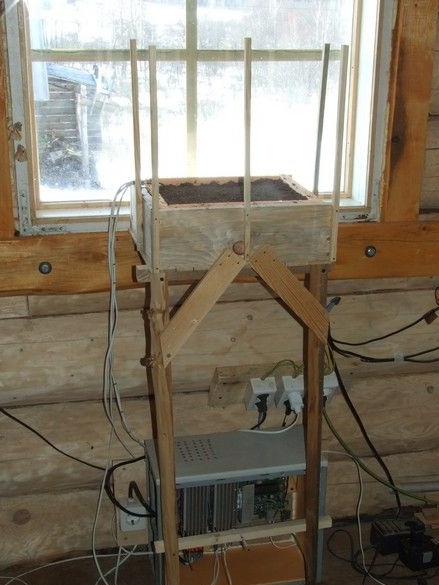
It is known that with plant growth, temperature is one of the key conditions. Both ambient temperature and soil temperature. The latter is perhaps even more so. If we discard very extreme temperatures for plants when it comes to survival, we find out some interesting dependencies, for example. An increase in soil temperature at a depth of 40 cm to 32 degrees Celsius gives a yield increase of 2 ... 2.5 times and a reduction in its ripening time by 30 days. Harvest eggplant, under the same conditions, grows 4 times. In general, an increase in soil temperature, relative to air by 3 ... 4 degrees, gives an increase in productivity, for example of tomatoes, by 43% and reduces the ripening time by 9 days. And yet, it is proved that increasing the temperature of the soil from 12 to 16 degrees Celsius, 100% increases the absorption of phosphorus oxide (P2O5) by the roots of plants, and this is the nutrition of plants.
On the other hand, there are still plants, in principle, thermophilic, for which somewhat elevated temperatures are generally native and comfortable. For instance. Thinking of experimenting with growing tobacco in the Perm Territory, he immediately faced the problem of low soil temperature.
Tobacco with our short summer can be grown only more or less, early ripening varieties and only through seedlings. Otherwise, even the lower leaves do not have time to ripen.
The optimum temperature for the germination of tobacco seeds is from plus 23 to plus 28. Ideally, this is plus 25. Tobacco is a southern plant, so if the temperature in the room is from plus 18 to plus 22, this can delay the emergence of seedlings for several weeks. And at temperatures from plus 10 to plus 15 they may not rise at all (they just rot). Moreover, it is desirable that the optimum temperature is combined with good lighting - tobacco seeds are extremely small and do not grow into the soil - they are distributed on the surface and slightly crushed.
So, the task was to provide a small amount plus 25 degrees and decent lighting. It was decided to organize the heating of the soil, and place the box on the windowsill.In principle, one could go an alternative way - place a box with seedlings in a warm place (for example, on a stove) and organize additional lighting with electric light.
A relatively compact, inexpensive, sealed, low power heater was required. Several designs of home-made sealed heaters exist among aquarists, in fact - quite similar conditions. The ancient design of a U-shaped glass tube with saline was rejected as not very reliable and dangerous, moreover, a design was required, in contrast to the prototype, working in a horizontal position. And here is another one - from an oil-filled vitrified wire resistor, it seemed already closer. The heating element is especially good, indeed it is a powerful PEV wire resistor - such as a non-heater - a wire of high resistivity is wound on a round ceramic tubular frame, the winding is vitrified. The charm.
There are also options for aquarium colleagues with resistors as fuel elements, covered with dry sand. This is very good. Yes, the use of wire resistances as small heaters is well known. There is such a practice, and not only among craftsmen who generally see a dozen "undocumented opportunities" and alternative applications in any subject at once. I met an industrial building for a video camera of "external", street surveillance. In it, near the sight glass, a miniature heater of a ceramic resistor, theirs, bourgeois, was installed. To prevent condensation inside the case and fogging of the glass.
What was used in the work.
Instruments.
A set of tools for radio installation, of course - a soldering iron with accessories. Construction dryer for working with thermotubes, extruder for sealant. For the manufacture of the box used carpentry tools, a screwdriver. Polyfoam, it is convenient to cut with a sharp construction knife, with disposable blades, such as clerical. Better under the line, better metal.
Materials
In addition to the resistors themselves, several suitable glass bottles, a silicone sealant, sand, a tin container for calcining it, and a fine sieve were needed. The power cord is flexible in double insulation. A bit of heat pipe. Pieces of non-thick boards for a box, self-tapping screws, "Penoplex" 20 mm thick.
So, the selection of materials - having studied the assortment of the local radio store, I chose resistors with a dissipated power of 5 W, in a ceramic rectangular case. A small selection of face values was offered. As a heater case, I decided to use something at hand - a small pharmacy glass bottle perfectly approached.
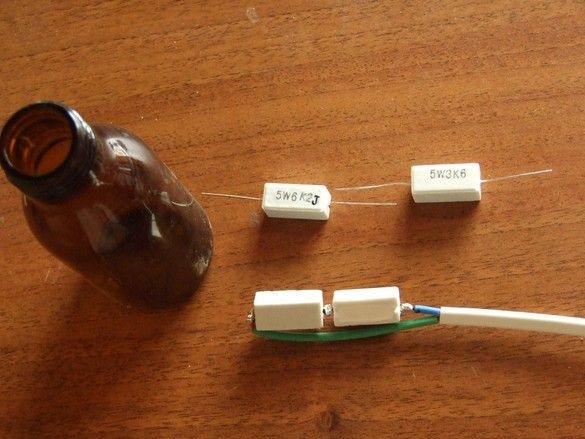
Based on the available values of the resistors, I chose the power of the heater.
6200 + 3600 = 9800 Ohm - The resistance of a chain of two resistors.
I = U / R = 220/9800 = 0.022 A - Current in the circuit.
P = U * I = 0.022 * 220 = 4.9 W - Power dissipated by two resistors.
U = I * R = 6200 * 0.022 = 139 V - Voltage drop across the 6.2 kΩ resistor.
P = U * I = 139 * 0.022 = 3.12 W - Power dissipated by the resistor 6.2 kOhm - fits into the acceptable power for the resistor (5 W) with a large margin, for the 3.6 kOhm resistor it makes no sense to consider, and so it will be clear how cheese in butter skate.
So, the heater power is about 5 watts. It was decided to make two pieces for more uniform heating. Conclusions to draw from a soft multi-core "network" cord.
Of course, it was impossible to do without temperature control. Was involved microprocessor thermostat. Temperature sensors, it is digital DS18V20, in a three-lead package TO-92. A temperature sensor, in order to avoid local overheating of the soil due to limited heat transfer in it, was placed inside one of two identical heaters. In addition, this placement avoided sealing the sensor separately. Structurally, the sensor in the heater body is placed, possibly farther from the heat-generating resistors. This allows you to get a little hysteresis.
Prepared and connected fuel resistors, after being placed in a glass bottle body, are filled with pre-sieved and calcined sand. He fell asleep in small portions, tapping the bottom of the bottle on the table - for a more dense laying of sand. Without reaching 1.5 ... 2 cm to the top, fill the neck with silicone sealant and mold it with a soapy finger. Glass surfaces in contact with the sealant must be dry, preferably degreased.
Silicone sealant, in this application, can probably be replaced with acrylic - it does not have fungicides or silicone for aquariums. An alternative sealing is epoxy glue.
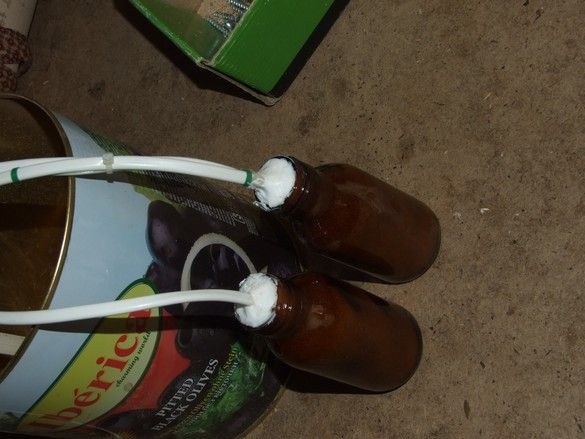
At the time the sealant hardens, the wires are laid approximately in the future working position.
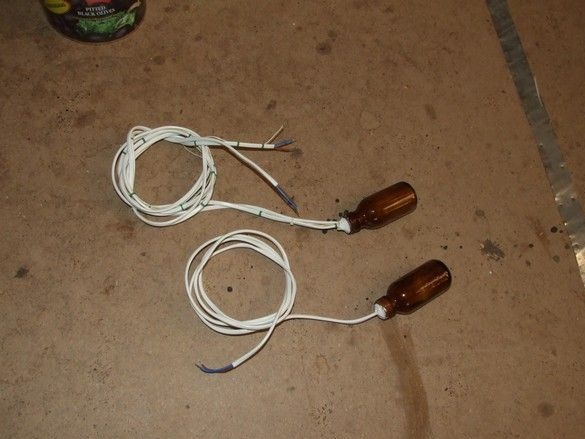
Ready-made heaters, one of them with a temperature sensor.
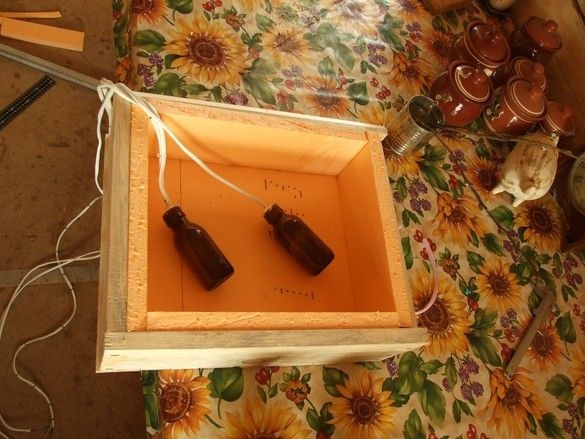
The box for seedlings was insulated - lined with non-thick building polystyrene from the inside (Penoplex 20mm). He distributed the heaters at the bottom of the box, gathered the wires into a bundle and fixed them on a corner with a tin bracket. Self-tapping screw. In order to not pull out the heaters together with seedlings in the midst of the experiment, tripping over wires.
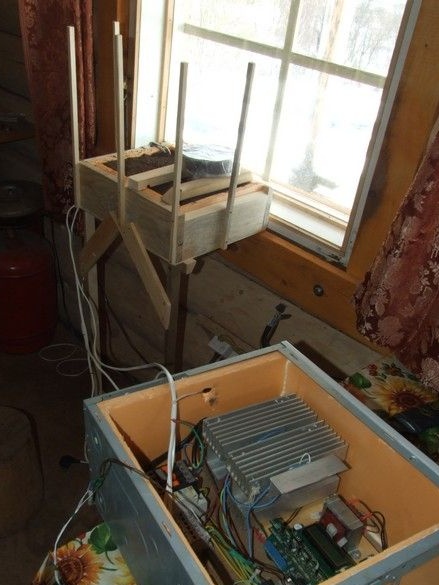
After planting sifted soil (very small seeds) into the "nursery", in small portions, slightly densifying to avoid voids, especially carefully around the heaters, I set the thermostat. He subordinated both heaters to the sensor in one of them, observed it for about a day, and corrected the “run-out” of the temperature.

A picket of vertical sticks on a box - for attaching foil, or whatever glitter to reflect the sun, otherwise the box with seedlings will have to be rotated every day so that the plants are not one-sided. With hanging wires, it is not too convenient.
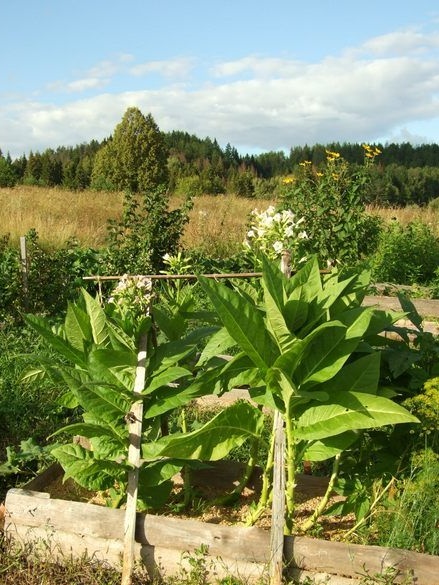
Well, in time the sprouted seedlings allowed the plants to keep in the warm season and allow the seeds to bloom and ripen. By the way, it was far from the earliest ripe variety.
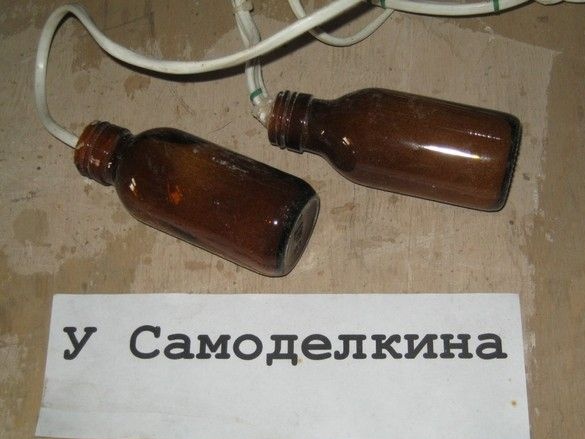
Heaters are shipped in a box until next season.
I must say - despite the fact that in general the experiment was a success, it was not repeated. Partly due to the relative bulkiness of the equipment, partly due to the gradual warming of the house, the temperature inside can now be easily maintained to be somewhat more comfortable for both people and plants.

